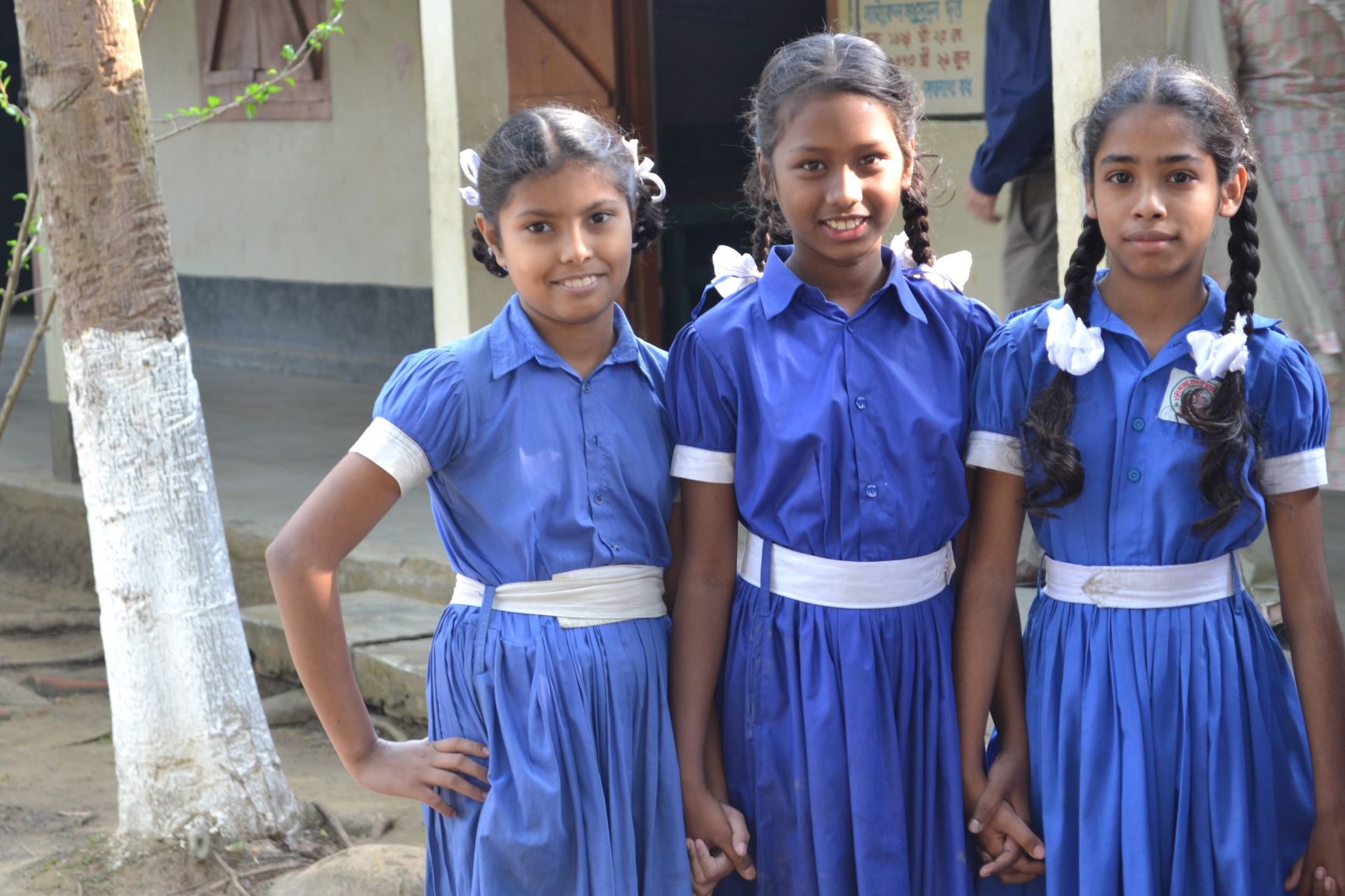 Primary school girls in Bangladesh
Primary school girls in Bangladesh
To help students deal with the adverse impacts of school closures, the Government of Bangladesh introduced remote learning through television, mobile phones, radio, and the Internet. But not all students have access to these resources. A World Bank study finds that access to these alternative learning methods and their uptake has been low. Of the surveyed school children (aged 5-15), less than 50 percent have access to radios, computers, and televisions, respectively . Nearly all of them have access to mobile phones, but many don’t have access to the Internet.
The study also found a digital divide between rich and poor households. When compared with the richest families, 9.2 percent of the poorest had access to televisions vs 91 percent for the richest. A similar trend exists across the other alternative learning mediums. Another survey shows that of the 21 percent of households with access to online learning programs, only 2 percent used them.
Pre-pandemic estimates showed 58% of Bangladeshi children did not achieve minimum reading proficiency by grade 5. It’s estimated this figure will increase to 76% during school closures.
Pre-pandemic estimates based on the World Bank’s Human Capital Index-2020 show that a Bangladeshi child starting school at age 4 expects to complete on average 10.2 years of school by age 18. But a more accurate estimation is the Learning Adjusted Years of Schooling (LAYS) figure, as it considers the quality of learning received by students during this period, which for this age group is around 6 years. Based on a simulation tool developed by the World Bank Education Global Practice, the COVID-19 induced school closures is estimated to result in a loss of between 0.5 and 0.9 years of learning-adjusted schooling for an average student. Considering an intermediate scenario of 9 months of school closure, LAYS could drop to 5.3 years.
The COVID-19 pandemic will likely translate into a substantial long-term economic cost. Quantifying the loss of learning in terms of labor market returns, the average Bangladeshi student will face a reduction around $335 in yearly earnings, which represents almost 6.8 percent of their annual income. Aggregated for all students in Bangladesh and projected 10 years into the future when all graduates have entered the labor market, this would cost the country’s economy up to $114 billion in GDP at net present value.

What can we do to mitigate the losses due to school closures caused by the pandemic?
1) Ensure access to learning tools: The Government of Bangladesh has taken swift decisions with the multi-modal remote learning delivery. Now it’s important to make these platforms fully functional through content development and mass delivery. Since digital learning may not be a feasible option for the poorest families, other methods may be employed including physical learning packages, mobile-based lessons or face-to-face classes maintaining social distance and protocols.
2) Offer effective remedial learning opportunities: Remedial education to help students catch up when schools re-open coupled with preparing teachers to teach at the right level will also be necessary to mitigate the losses sustained during the period of school closure. To ensure this, the first step is to assess student learning when they return to classrooms and to identify learning loss through formative assessment on literacy and numeracy competencies.
3) Reduce dropouts: We must reduce additional dropouts and absenteeism once schools open, through stipends, safe school reopening and communication campaigns. Stipends will help to bring back and retain children from poorer families. Parents and communities will play an important role in building confidence and improving the school re-opening process. Communication campaigns through different mediums will be essential in ensuring that learning continues while schools are closed and when they re-open.
4) Leverage partnerships: Finally, we need to leverage partnerships between government, non-government, private sector, and civil society in managing education delivery during and after the crisis. It will be important to continue to collaborate and bring expertise together in finding solutions to ensure learning continues for the poorest children, prepare teachers for post-pandemic classrooms , develop effective remedial education model and bring additional resources to build back better and support the infrastructures for a resilient education system.
These actions can be the first step towards creating a resilient education system and will potentially kickstart the road to recovering from losses sustained during the pandemic.
To learn more, read A Simulation of COVID-19 School Closure Impact on Student Learning in Bangladesh.



Join the Conversation